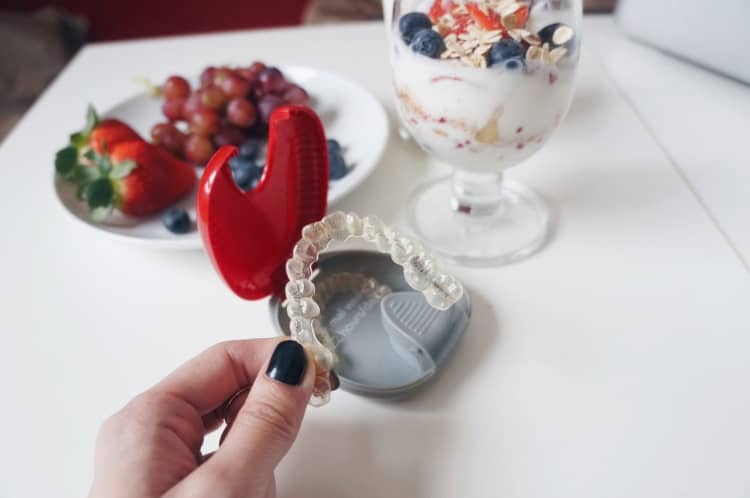I would suggest having a prototype of the veneers made with the ideal shape, size and position of your front teeth so that you and your dentist can visualize the final aesthetic result of combining Invisalign and veneers.
At the prototype stage, tweaks to the veneers can be done easily and quickly. Once you are happy with the prototype, it will be used to guide optimal positioning of your teeth using Invisalign and also as a guide for the final ceramic veneers.
Having a prototype also ensures that you get a preview of the final outcome that will guide you in making treatment decisions.
Your dentist, the ceramist (the person making the veneers) and you yourself may have very different ideas on what is aesthetic, and the prototype will help ensure a consistent aesthetic vision from start to finish.
The prototype also guides the final tooth positions programmed in Invisalign to optimize spaces and function (how your teeth bite together).
Of course, you can still have Invisalign even without having this prototype, but if you eventually do decide on veneers, it may mean that more tooth structure may need to be trimmed (shaved down with a drill) for the veneers to be fitted. In certain cases, if the veneers and Invisalign are planned seamlessly, you may even be able to get away without any tooth trimming at all.
If you do proceed with Invisalign without the aesthetic prototype, you may be very happy with the final results of just alignment of your teeth alone. Some patients can get a very satisfactory result with just alignment and bleaching.
I would discuss with your dentist about getting the aesthetic prototype so that you can fully explore all the possible treatment options in a practically risk-free manner. Nowadays, the prototype is made using a process known as Digital Smile Design (DSD) which gives us many possibilities to play around with different aesthetic setups.






